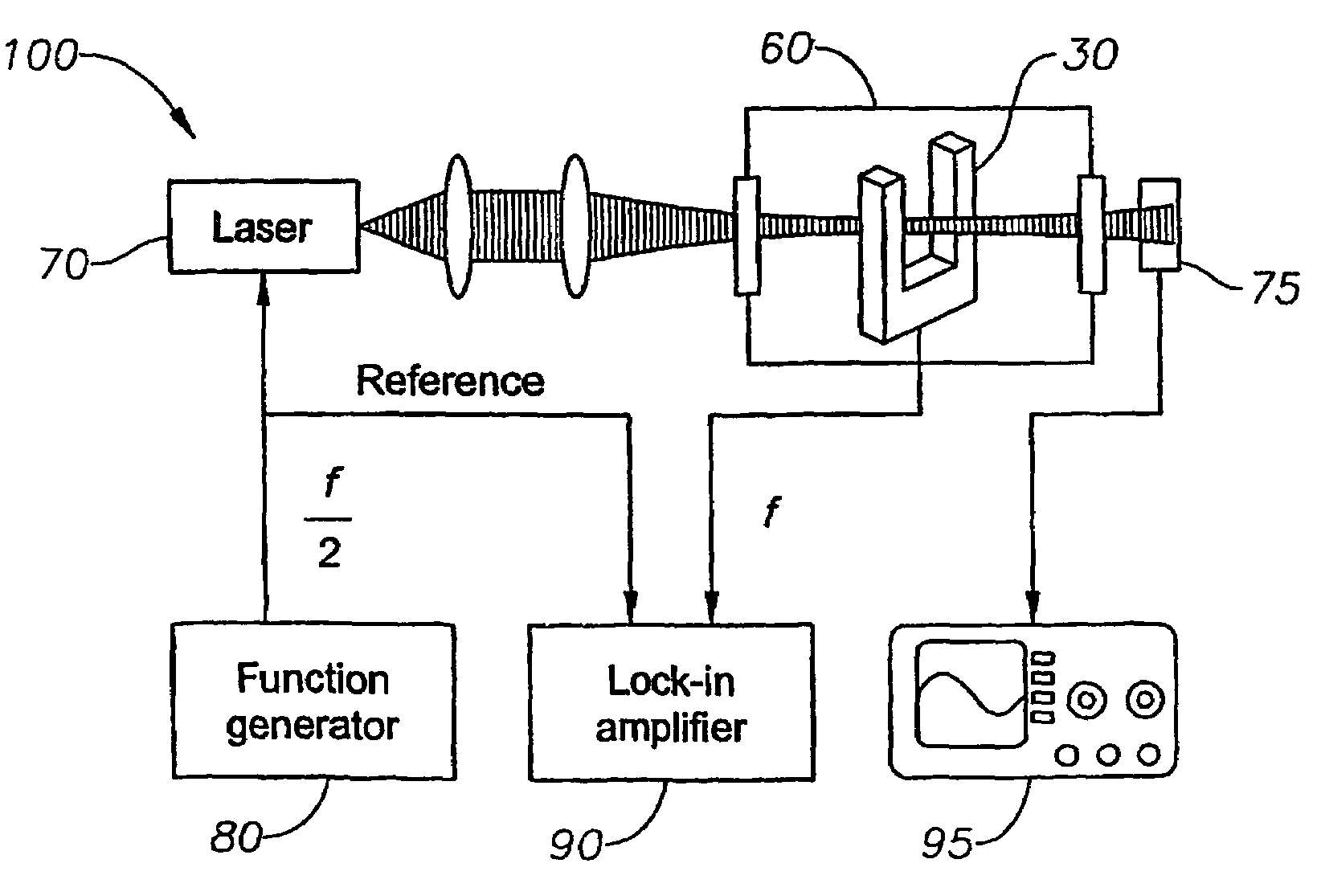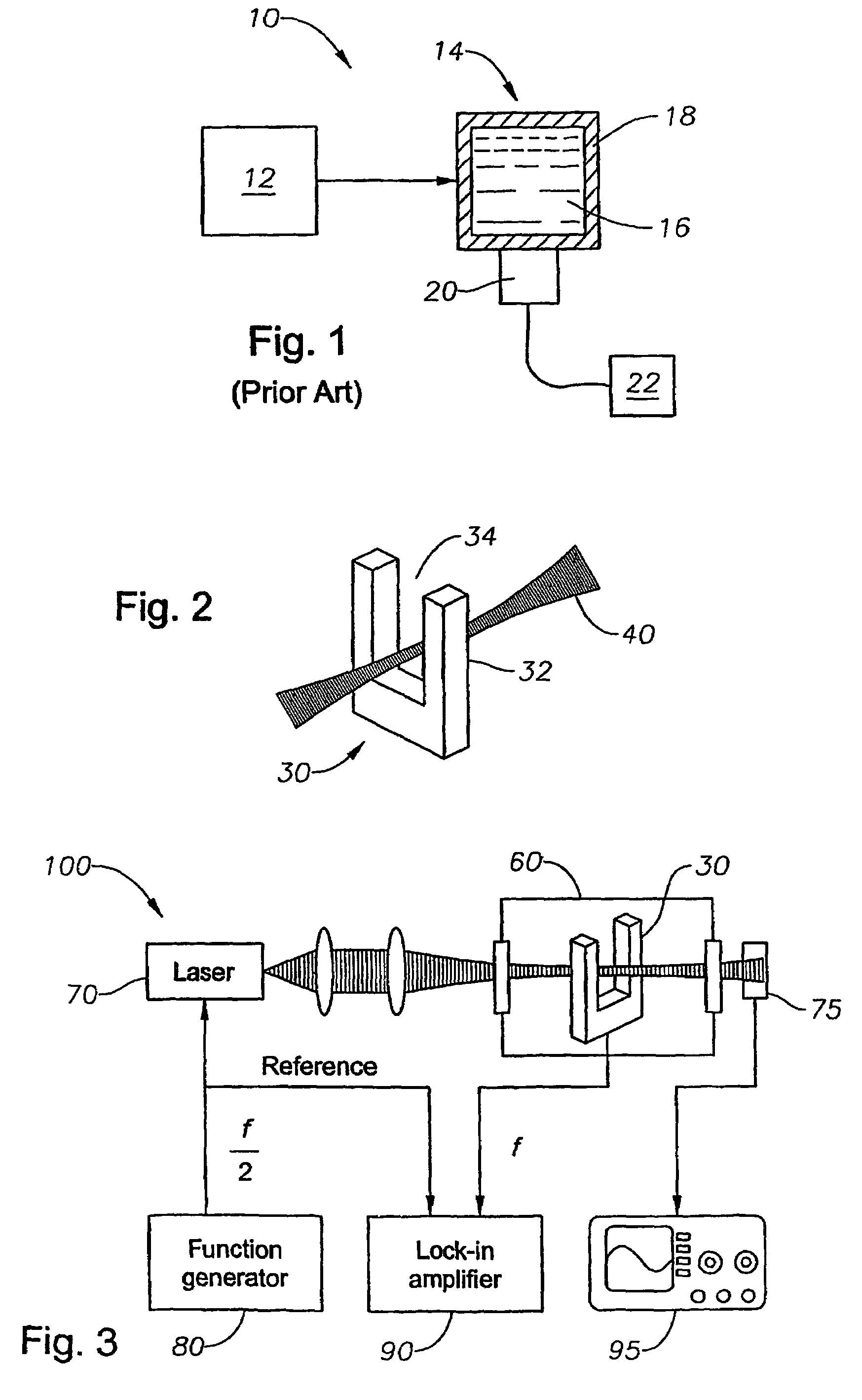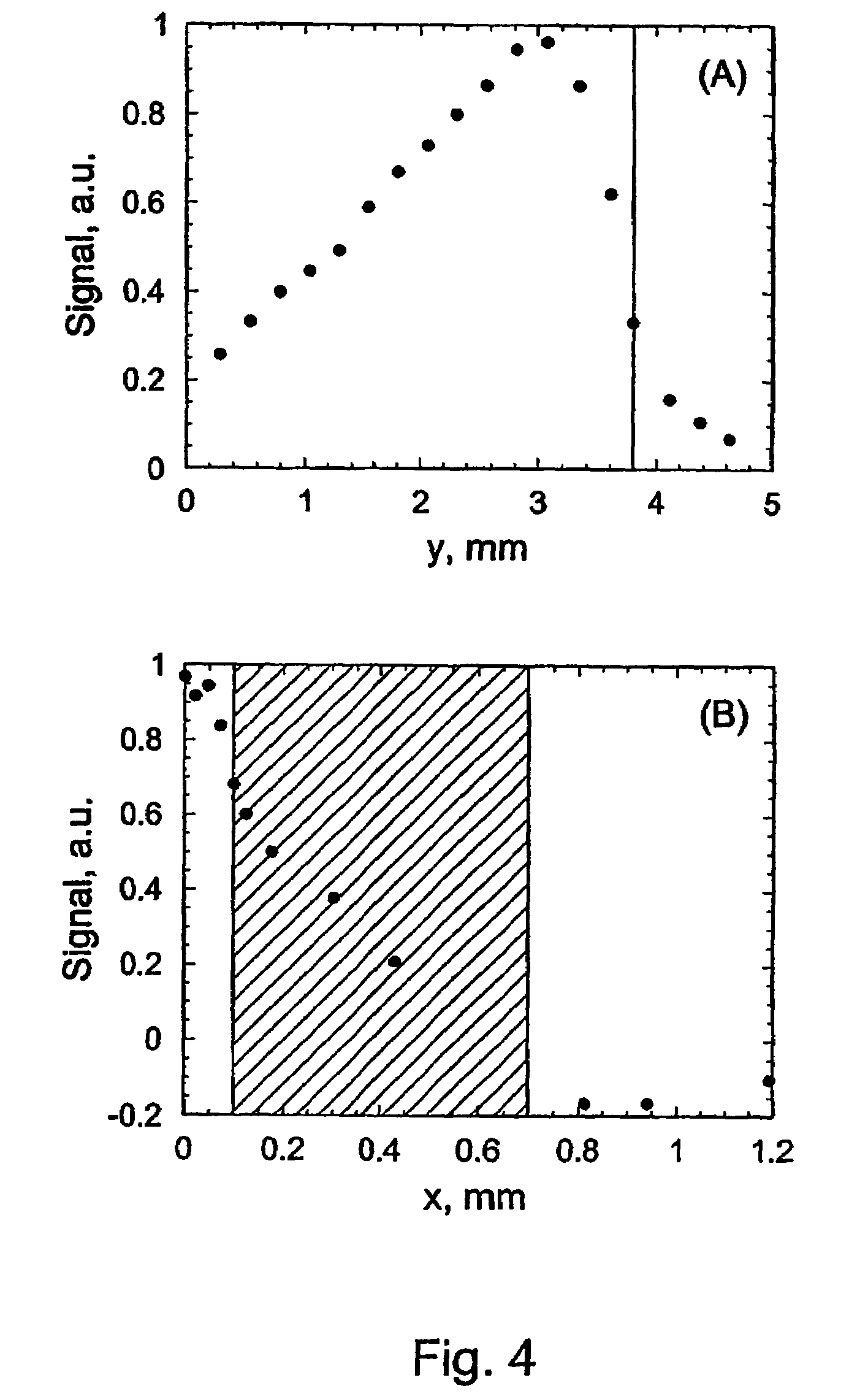Quartz-enhanced photoacoustic spectroscopy
a photoacoustic spectroscopy and quartz technology, applied in the field of photoacoustic spectroscopy, can solve the problems of achieving longer t's in a fluid-filled sample cell, expanding or contracting materials within the environment,
- Summary
- Abstract
- Description
- Claims
- Application Information
AI Technical Summary
Benefits of technology
Problems solved by technology
Method used
Image
Examples
example
[0038]A commercially available tuning fork, such as might be used in a wristwatch, (tuning fork R38-32.768-KHZ-Raltron) is obtained. The overall tuning fork dimensions are 6 mm×1.4 mm×0.2 mm, with each prong being 3.8 mm long and 0.6 mm wide. The gap between the prongs is 0.2 mm.
[0039]As discussed above, several configurations for detecting the photoacoustic signal with a tuning fork 30 are shown in FIGS. 2 and 6–10 and observations using the present tuning fork will be described.
[0040]FIGS. 2 and 6 correspond to aiming laser light 40 at the tuning fork 30 from different directions. In FIG. 2, the laser beam 40 is perpendicular to the tuning fork plane, while in FIG. 6 the laser beam 40 is in the tuning fork plane. Configuration 6 results in a longer effective pathlength but is more sensitive to alignment because the laser beam is directly contacting the fork.
[0041]FIG. 7 presents a combination of a tuning fork 30 with an acoustic resonator or tube 50. Resonator 50 preferably compri...
PUM
| Property | Measurement | Unit |
|---|---|---|
| size | aaaaa | aaaaa |
| resonant frequency | aaaaa | aaaaa |
| frequencies | aaaaa | aaaaa |
Abstract
Description
Claims
Application Information
 Login to View More
Login to View More - R&D
- Intellectual Property
- Life Sciences
- Materials
- Tech Scout
- Unparalleled Data Quality
- Higher Quality Content
- 60% Fewer Hallucinations
Browse by: Latest US Patents, China's latest patents, Technical Efficacy Thesaurus, Application Domain, Technology Topic, Popular Technical Reports.
© 2025 PatSnap. All rights reserved.Legal|Privacy policy|Modern Slavery Act Transparency Statement|Sitemap|About US| Contact US: help@patsnap.com



